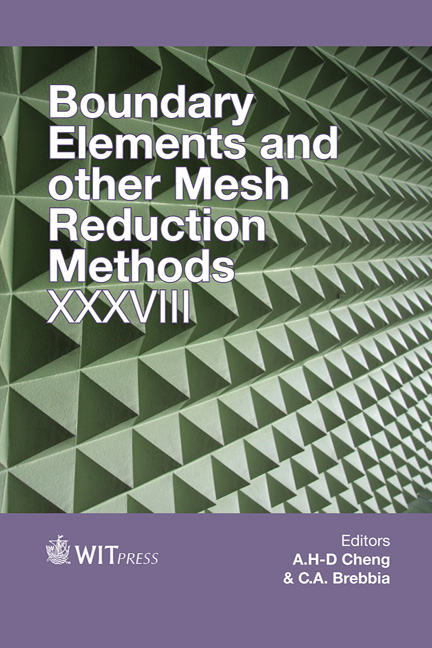Radial Basis Functions: Achievements And Challenges
Price
Free (open access)
Transaction
Volume
61
Pages
20
Page Range
3 - 22
Published
2015
Size
361 kb
Paper DOI
10.2495/BEM380011
Copyright
WIT Press
Author(s)
E. J. Kansa
Abstract
Traditionally, the various forms of compactly supported polynomial based schemes such as finite difference, element, and volume methods were used in the numerical solution of ordinary and partial differential equations (ODEs and PDEs) as well as integral equations (IEs). The primitive computers had limited memory and processing speed. As time progressed, spectral and pseudo-spectral methods that possess exponential or spectral convergence that use tensor products of global expansions of one-dimensional orthonormal functions were used to solve ODEs, PDEs, and IEs. In the past 25 years, radial basis functions (RBFs) that can be either compactly supported or global gained in importance. However, those global RBFs that are C∞ with shape parameters enjoy exponential convergence. The solution accuracy can be increased by either the spatial resolution or increasing the shape parameters. The performance of C∞ RBFs has been demonstrated in a wide variety of linear and nonlinear elliptic, hyperbolic and parabolic PDEs and IE applications. Both well posed and ill-posed problems can be solved as well as with defined arithmetic and fuzzy arithmetic, problems with fractional derivatives, etc. Computers with the standard 32 bit chips limit the inherent power of the global RBFs by giving rise to potentially severely ill-conditioned systems. However, procedures using preconditioning and domain decomposition can be used to overcome this limitation. Recently, fast extended precision software enables the use of large shape parameters outperforming compactly supported finite elements and other methods. Also, the Galperin–Zheng weak formulation allows treatment of both well posed and ill-posed problems because it looks for solutions with global, rather than local minima. Presently, meshfree C∞ RBFs appear to have the potential of solving many important scientific problems in higher dimensions.
Keywords
partial differential equations, integral equations, radial basis functions, strong and weak form, extended precision, global minimization





